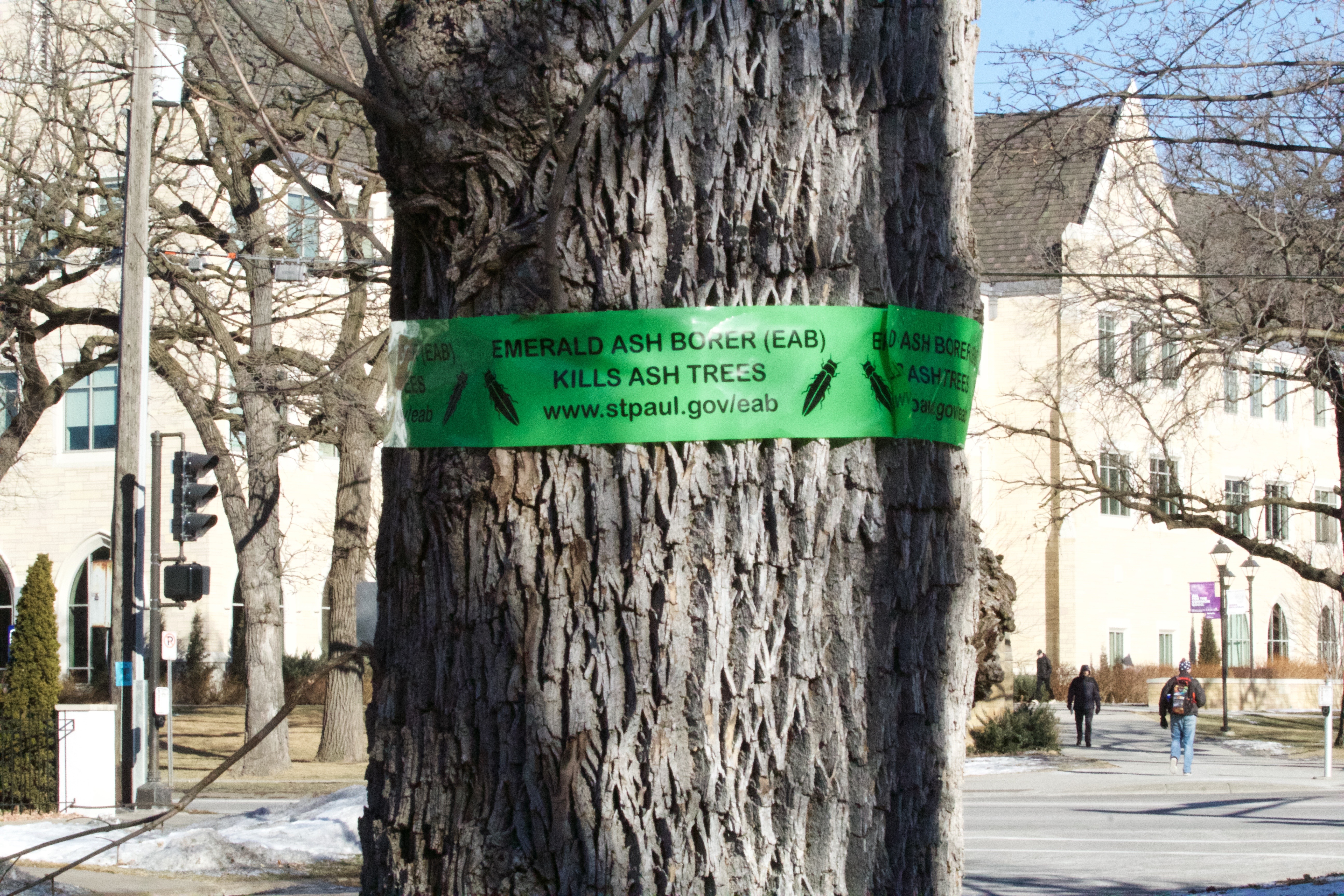The city of St. Paul has placed emerald green tape on trees that line roads like Summit and Cleveland avenues to draw attention to the nearly 998 million ash trees that grow in the cities and forests of Minnesota.
The tapes do not indicate that the trees will be removed but do warn of a potential for emerald ash borer infestation. Infested trees, however, are being removed.
“By the end of this year, we will be somewhere around 10,000 removals since we started. And we still have a lot to go,” said Rachel Coyle, an urban forester for the St. Paul Forestry Department. “You can drive down Exeter right now and see that all of the really large trees there are ash, and then you can go in a few weeks and see the difference so it’s going to be a big impact.”
The ash trees that line Exeter are scheduled for removal within the next few weeks. So far this is the only street near St. Thomas that will be removing trees, with new ones to be planted in their place.
The emerald ash borer, a non-native invasive insect, has already forced the removal of thousands of trees throughout St. Paul. The bug has been in Minnesota for many years, but the recent spike in infestations required the St. Paul Forestry Department to begin removing trees all over the city.
The emerald ash borer information network, an online resource tracking the spread of the insect, reports that the larvae feed on the inner bark of ash trees, disrupting the trees’ ability to transport water and nutrients.
Coyle manages St. Paul’s trees and informs the public of the proper techniques to protect trees on their private property, such as the 73 ash trees on the St. Thomas campus.
Roger Weinbrenner is the grounds crew director at the University of St. Thomas and is responsible for treating and maintaining the St. Thomas ash population.
“So far, we have not had a confirmed case on our campus. We anticipate in the near future it will spread,” Weinbrenner said.
Weinbrenner and his crew have assessed the trees on campus and based on their value these trees are treated with insecticides every two to three years.
“Trees have value to our campus, so we are actively working to maintain the ones that are high quality and worth saving, treating damaged trees and removing diseased trees in a timely manner,” Weinbrenner said.
More information can be found on the city’s website.
Lauren Knisley can be contacted at knis1243@stthomas.edu



